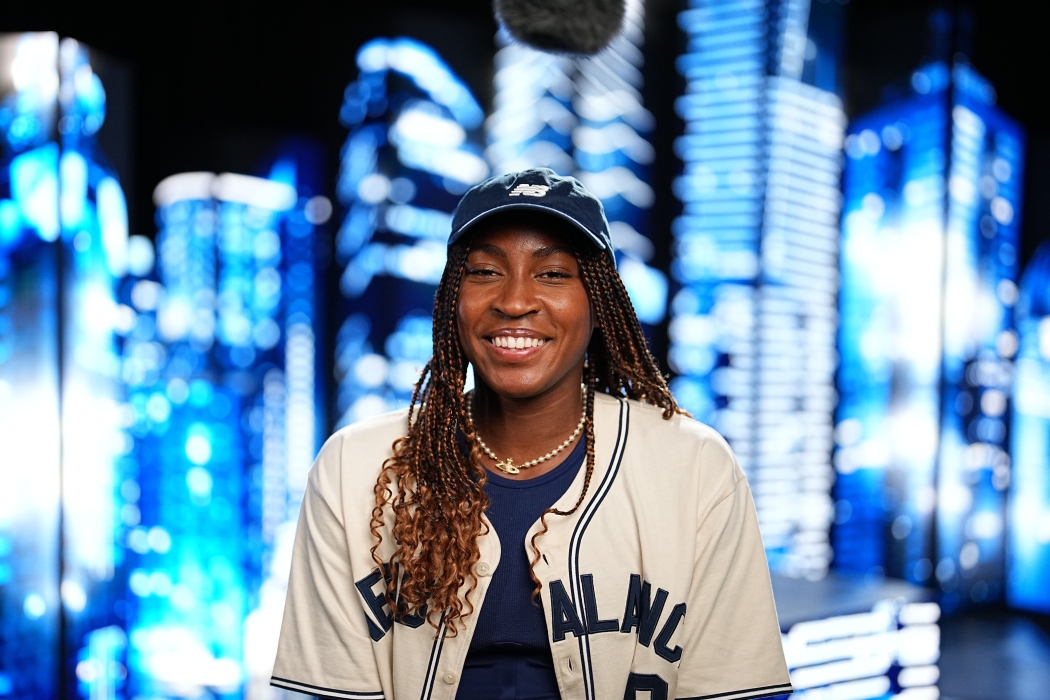Almost 17 years separate Novak Djokovic and Coco Gauff, but for two players at the opposite ends of their careers, the goal is the same: the Australian Open title.
Djokovic was born 16 years and 296 days before Gauff, who turns 20 this year and already has one Grand Slam title under her belt.
MORE: Australian Open 2024 men's and women's singles draws
The age gap between the champions of the previous major – Gauff and Djokovic won the 2023 US Open singles titles – is the biggest in history.
The next largest gap between singles winners at a Grand Slam was between Iga Swiatek and Rafael Nadal – almost 15 years – when they both won Roland-Garros in 2020.
While Gauff aims to become just the seventh teenager in the Open Era to win successive Grand Slam titles, world No.1 Djokovic has the overall record for major wins on his mind; an 11th AO crown would give him his 25th Slam and see him overtake Margeret Court in the process.
Should Gauff – who faces reigning champion Aryna Sabalenka in a blockbuster semifinal – and Djokovic go all the way, it would comfortably surpass the biggest age gap between AO champions, which currently stands at 12 years and 251 days between Martina Hingis and Petr Korda in 1998.
READ: AO 2024 women's semi final preview - your five-point guide
Djokovic is knocking off record after record.
His quarterfinal victory over world No.10 Taylor Fritz saw him match Seles’ run of 33 consecutive AO match wins, while he also claimed his 15th ATP top-20 win at a major since turning 35. That surpassed Roger Federer’s tally of 14, making the Serbian the outright leader for any player aged 35 or over since the ATP rankings were established in 1973.
Gauff, aiming to become the fourth teenager to win the AO women’s singles title in the Open Era, is making history too.
Only Jennifer Capriati (50) has won more Grand Slam singles matches among teenagers competing for the United States than Gauff, who has equalled Serena Williams’ tally of 49 and sits just two wins away from the outright record.
Gauff stacking up the stats
The world No.4 has won more matches so far in 2024 than any other female player and is just the second teenager this century to win her first 10 matches in a single calendar year, after Justine Henin won her opening 13 back in 2001.
Gauff is the youngest player to reach the AO women’s singles semifinals since Nicole Vaidisova made the last four as a 17-year-old at AO 2007 – a tournament where another teenager, Maria Sharapova, reached the final.
Sharapova remains the last teen to play in the women’s singles showpiece match at Melbourne Park.

Gauff is one win away from matching that achievement and is already the youngest player since Sharapova, at the US Open 2006 and AO 2007, to win at least 12 successive women’s Grand Slam matches.
A year after Sharapova reached that final at Melbourne Park, she won the title at Australian Open 2008 – the same tournament at which Djokovic won his first Grand Slam title.
But how does his 2024 campaign compare with his winning one from 16 years ago?
Djokovic putting in the hours
In 2008, Djokovic spent an average of 130 minutes on court per match, 51 minutes less than in 2024.
Djokovic has already spent 15 hours and nine minutes on court at AO 2024; it is the most he has played across the first five rounds at the event, surpassing 14 hours, 52 minutes in the first five rounds at AO 2021.
However, Djokovic has been especially effective on serve, slotting at least 10 aces in each of his five matches at AO 2024 – just the second time he has done so in five successive ATP Tour-level matches (after AO 2021). His average ace count per match has risen to 13.8 in 2024, compared to 9.6 in 2008, and he’s also averaging fewer double faults per match.
Djokovic, who next faces Jannik Sinner, is looking to become the second oldest men’s singles Grand Slam champion at the Open Era; he will be 36 year and 251 days old on Sunday, behind Ken Rosewall who won AO 1972 aged 37 years and 62 days.
With Gauff in similarly sensational form, despite being at a completely different juncture of her career, it’s proof that age really is just a number for the world’s very best.

